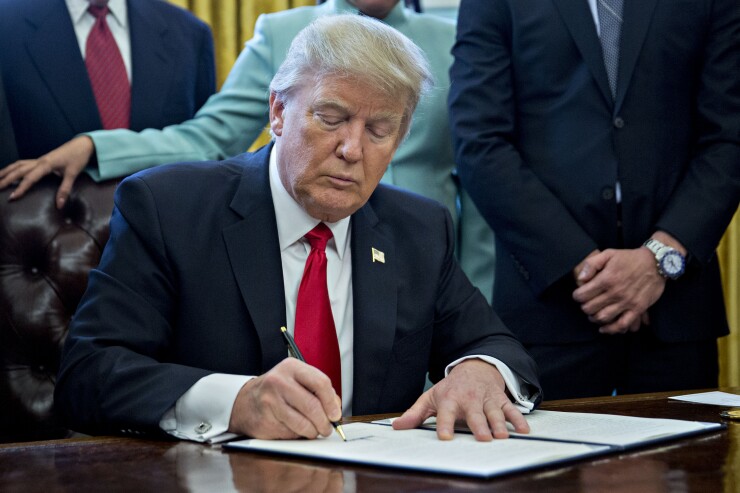The incoming
Two key players affect pay at the federal level: the Equal Employment Opportunity Commission (EEOC) and the Office of Federal Contract Compliance Programs (OFCCP). The
The OFCCP, on the other hand, regulates any employer who does business with the federal government, with the mission of ensuring federal contractors and subcontractors provide equal opportunities to all candidates and workers.
Read more:
If employers see major changes to the pay landscape at the federal level, then the EEOC or OFCCP will likely be involved, explains Christine Hendrickson, VP of strategic initiatives at Syndio, a pay transparency solutions provider. However, Hendrickson predicts that the EEOC will not likely be the source of structural reforms to wage policy, at least for the next two years.
"The EEOC is governed by a five-person, bipartisan commission, and right now, there are three Democrats, one Republican and one open seat," she says. "The next time there will be a Democratic seat open for change is 2026. Until then, we're not likely to see any major shifts under the current balance of the commission."
This means that under the first two years of the Trump presidency, Hendrickson is confident that the EEOC won't revoke any formal guidance or modify its Strategic Enforcement Plan, which details the agency's priorities and strategies for 2024-2028. Still, once the EEOC has a Republican majority again, laws prohibiting discrimination and harassment along the lines of race, gender, religion, sexuality and age may be significantly reduced in terms of scope and requirements.
As for the OFCCP, there's more wiggle room for change. For example, as part of an executive order from the Biden administration, the OFCCP requires employers under its jurisdiction to conduct an annual pay equity audit. Those audits are then requested during OFCCP compliance reviews. Hendrickson predicts that this stipulation could be swiftly removed.
Read more:
"The OFCCP could face slow shifts, or they could be quite significant, like possibly not even having an OFCCP anymore," she says. "Over a third of employees in the U.S. work for a federal contractor, so this would cover a big swath of employers and many large employers."
Hendrickson adds that the Biden administration's efforts to reinstate pay gap reporting at the federal level — a proposal that would have been issued in 2025 — won't move forward.
"Pay gap reporting was still in its nascent stages, and we shouldn't expect it to come back anytime soon," says Hendrickson. "Pay gap reporting is effectively done at the federal level."
Hendrickson does believe that employers will see movement in the pay equity space, but on the state level rather than the federal. She notes that under Trump's first presidency, there was a big push for pay equity and transparency by state legislators. Within just a little over a year into Trump's first term, state lawmakers introduced over 180 bills focused on closing the pay gap. In the last four years, 10 states have established salary transparency laws, changing the competitive labor landscape.
Read more:
"What happened in the first Trump administration is we saw less action happening at the federal level, we saw the seesaw shift towards more action at the state level," says Hendrickson. "In fact, during the last Trump administration, we saw significant increases in pay equity laws and pay equity enforcement at the state level. And I suspect that we'll see more of that."
While Hendrickson doesn't blame employers for feeling uncertain about where policies are headed, she warns them against letting their confusion keep them from making a continued effort toward pay equity, especially when it comes to salary transparency.
"The cat is out of the bag, and there's no moving back on transparency," says Hendrickson. "Look what's on the horizon with the EU Pay Transparency Directive — this is the most significant piece of pay equity legislation passed anywhere in the globe since the 1960s."
Read more:
Notably, the EU Pay Transparency Directive requires EU companies to not only share information on their workers' salaries but also take action to close any gender pay gaps beyond 5%. Hendrickson believes the U.S. may see similar legislation introduced but at the state level.
Ultimately, even without considerations for state and federal regulations, Hendrickson encourages employers to communicate how they build their salary ranges for different roles and gather data that reveals the extent of their pay gaps.
"This focus on transparency goes above the law. When you're transparent about what you pay and how you make the decisions around pay, you build trust with employees," says Hendrickson. "Employees often think the pay gaps are larger than they are or that the pay decisions are less defined, which erodes employee trust and company brand."






